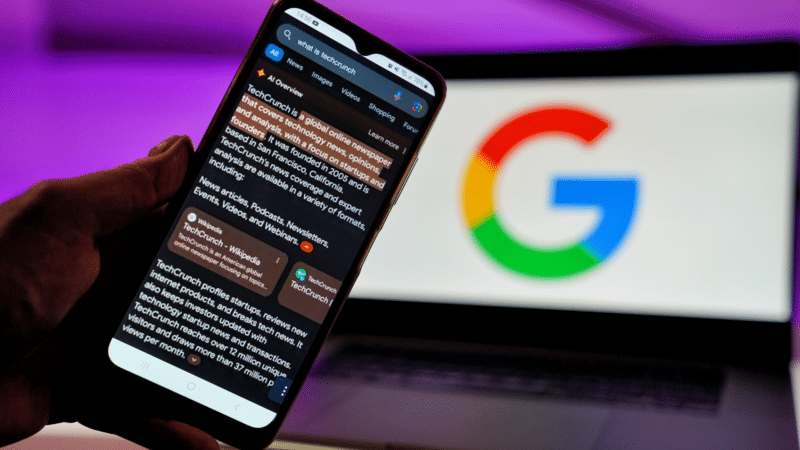5 ways advertisers can prepare for Google’s AI Overviews

Google’s annual marketing event, Google Marketing Live 2024, heavily emphasized upcoming AI products and features, particularly the Search Generative Experience (SGE), now called AI Overviews.
Ads within AI Overviews are being tested in the U.S. only on queries it believes generated replies will be helpful for the user, Google said. This will focus on commerce verticals primarily and roll out to more restricted categories, such as insurance and fintech teams, as the product emerges.
As AI Overviews roll out more broadly, PPC advertisers must adapt their strategies to remain competitive in the evolving paid search landscape.
This article explores the impacts on advertisers and outlines key tactics to navigate this AI-driven future, including broad match adoption, value-based bidding, multi-channel measurement and leveraging Performance Max and Demand Gen campaigns.
How will AI Overviews impact advertisers?The largest concern for advertisers, reasonably so, is the expected drop in site traffic if customers no longer need to click on a website to get information.
Remarketing lists and audience pools will decrease. For publishers, ad revenue will decline if fewer people visit their pages.
1. Embrace broad matchOnce AI Overviews start incorporating ads, broad match keyword adoption is the key to ensuring this is effective for advertisers.
Broad match and audience targeting will identify potential customers based on their search behavior and intent. Many have seen a decline in the efficiency of phrase match over the last year and it appears that the majority of Google’s engineering resources are being poured into broad match algorithms.
Many brands are still wary of this match type due to its historical performance and the headaches that broad match and broad match modified have caused over the last 15 years.
Still, Google has been signaling that the phrase is no longer a priority and that scalability will only really be possible via broad match.
Slowly opting in, testing in small batches and tightening up negative lists should be underway for most verticals.
Dig deeper: Why it’s time to reevaluate your match type and bidding strategy
2. Adopt value-based biddingTo get the most out of AI Overviews, you must have the right bidding in place in addition to broad match. Don’t get stuck on the idea of potential lost traffic to landing pages until there is data to support that.
In many cases, a drop in site traffic will lead to more engaged/qualified users coming to the site and completing an action due to the bid strategies set up.
Value-based bidding will use the most data to find the right users looking to perform the intended action at the right time.
Dig deeper: Value-based bidding: Why it’s key to boosting your Google Ads
3. Take a triangulated measurement approachMeasuring success remains top priority for advertisers. Leveraging multiple sources of measurement – ideally three – is key to understanding performance, optimizing in real time and maximizing the efficiency of media plans and budgets.
Data-driven attribution, in-platform measurement tests (like match-market, conversion lift, or similar tests) and larger cross-channel measurement (namely, Media Mix Models) should all be used in tandem to discern the efficacy of campaigns.
One hypothesis surrounding AI Overviews is that click-through rates will be lower. So static impression shares and measuring incrementality of paid media – especially on video or non-search placements – will be key to budget planning.
Dig deeper: Google’s attribution model shake-up: 3 solutions for advertisers
Get the daily newsletter search marketers rely on.
Business email address Subscribe Processing... 4. Leverage Performance Max and Demand Gen campaignsThe state of paid search has already been moving away from being defined as exclusively text ads. Paid search, as a category on Google, encompasses Maps, YouTube, Gmail and anywhere in the Google ecosystem someone can search.
Outside of Google, customers are searching more than ever across Amazon, retail media networks, TikTok, Pinterest, Reddit and dozens of other sites.
To remain competitive in the search landscape, Performance Max and Demand Gen campaigns will be major line items in most media plans.
The level of automation they offer and the strong algorithms that power these campaigns will help find customers wherever they are online.
Paired with value-based bidding, these campaigns will fuel AI Overviews to match queries to consumers with the best audience signals and conversion actions.
Dig deeper: How to reach new audiences with multi-platform search advertising
5. Push for transparencyAs advertisers, it will be our job to continue to advocate for deeper levels of reporting within both Performance Max and Demand Gen. This is crucial to push Google to be more transparent, but also so that brands can use cross-channel learnings to make smarter decisions across all of their advertising platforms.
Especially as Google’s AI Overviews continue to give dangerous or wrong answers to queries, we should have full access to query reports to know what our ads are serving against and how our landing page content appears against searches.
Google must also release deeper levels of Performance Max and Demand Gen reporting to show what placements ads are serving against to better understand performance and keep an eye on the Search and Video Partner networks.
Getting ready for AI OverviewsThe future of paid search is clearly shifting to embrace AI. It’s an exciting time to be in this space.
Since Google is setting the parameters for success, navigating how to make broad match, value-based bidding, Performance Max and Demand Gen work for your brand specifically will be both critical for success and also a long process.
Delaying any of the above will likely lead to poor performance, so it’s time to hop on the train as it picks up speed.
